Crafting landing pages that truly convert isn’t just about aesthetics—it’s about strategy. Even well-designed pages can suffer from bounce rates as high as 70-90%. That means, despite attracting visitors, businesses lose out on valuable conversions. The difference between a page that works and one that doesn’t? Real understanding of what makes users click.
In a world where Google’s Gemini AI is reshaping digital experiences, the landing pages that win aren’t just visually stunning—they’re built on data, empathy, and adaptability. Today’s marketers need to think beyond best practices and embrace a test-and-learn mindset, always ready to evolve with the next digital breakthrough.
Key Takeaways
- Laser-Focus on One Goal: The highest converting landing pages have a single, clear objective and remove any distractions that might lead visitors away.
- Design and Copy Matter: Engaging visuals, strong headlines, and benefit-driven copy—supported by real-world examples—are essential for grabbing attention and driving action.
- Build Trust and Make It Easy: Social proof and simple, frictionless forms increase trust and help capture more leads.
- Test, Analyze, and Optimize: Ongoing A/B testing, speed improvements, and audience insights are key to continual growth and better conversion rates.
Crafting Landing Pages That Convert: Your Essential Guide
A landing page isn’t just a digital billboard; it’s your conversion powerhouse. Its role is capturing attention, building trust, and guiding visitors toward your desired action. To do this well, you must know your audience and plan with intention.
Step 1: Establish Your Foundation
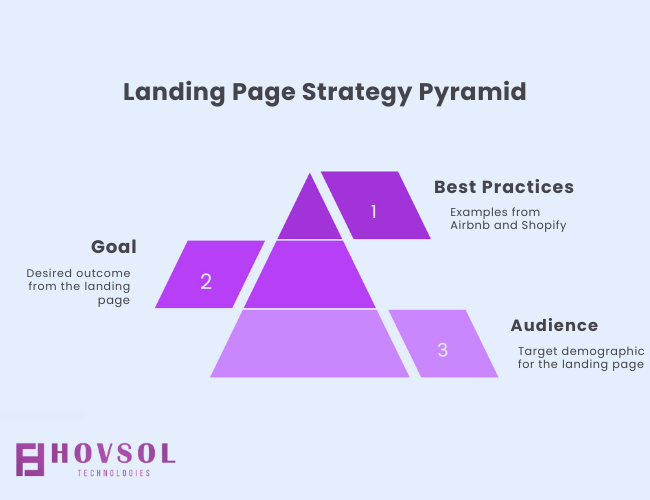
Before you design a pixel, clarify two things: your goal and your audience.
Focus on One Clear Objective
Here’s a cautionary tale from Airbnb: In its earliest marketing, Airbnb tried to cram too many calls-to-action onto its landing pages—rentals, listings, host sign-ups. The result? User confusion and low conversion rates. When they narrowed their focus to a single, clear action, sign-ups soared.
Keep your landing page laser-focused. Remove extensive navigation, extra links, and distracting footers that lead visitors away from your main goal. Treat every distraction as a “leak” in your funnel.
Know Your Audience Inside Out
Remember the viral launch of Shopify’s free trial page? Their team pored over user data, learning what made entrepreneurs hesitate and what excited them. They spoke to real users, ran surveys, and used heatmaps to perfect their pitch. This research helped them rewrite the page to answer objections upfront and emphasize results, leading to record trial signups.
Use analytics, surveys, and heatmaps to discover what your audience truly values. The better you know them, the more your page will convert.
Step 2: Design for Instant Attention and Trust
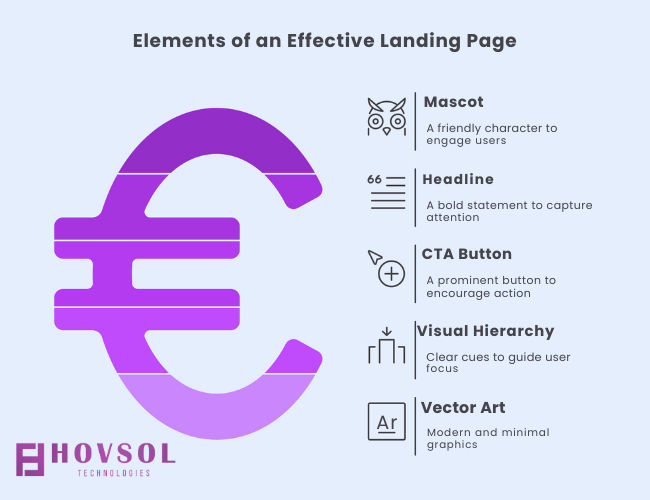
Visuals are your first handshake. The hero section—what visitors see first—can make or break you.
The Power of the Hero Section
Take inspiration from Duolingo. Their hero section is a masterclass: a simple, bold headline (“Learn a language for free. Forever.”), a friendly mascot, and a brightly colored CTA. No clutter, just immediate clarity and an emotional hook. It’s no surprise they boast millions of signups.
- Headline: Make it clear, benefit-driven, and specific.
- Sub-headline: Expand with one more layer of value.
- Visual: Use original images or video. Dropbox’s old explainer video is still a textbook example—simple, human, and focused.
Studies show that landing pages with video can boost conversions by up to 86%. Make your core message clear within the first 10 seconds—the “Blink Test.”
Guide the Eye with Professional Design
Visual hierarchy isn’t just for designers—it’s for results. Mailchimp often uses arrows, color contrast, and plenty of whitespace to guide the eye. Place your CTA where it stands out. Use cues like arrows or even the direction a person or mascot is looking. These subtle touches direct attention and increase clicks.
Step 3: Communicate Compellingly
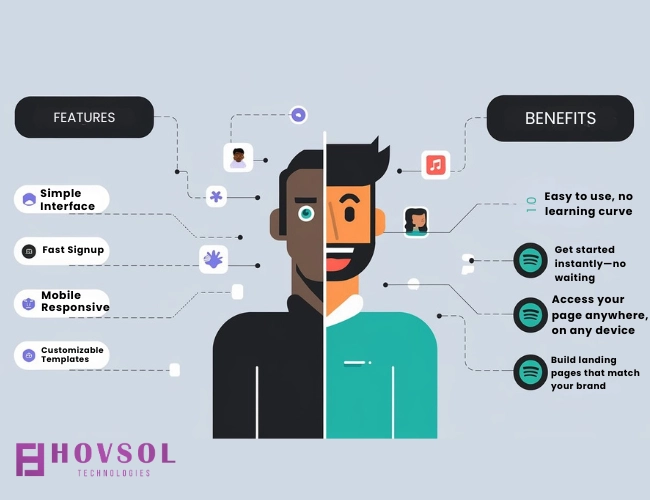
Even the prettiest landing page fails if your copy falls flat. The secret? Write like you’re helping a friend.
Speak Your Audience’s Language
Instead of just listing features, translate them into real benefits. For example, Notion says, “Organize your life in one place”—not “multi-purpose productivity app.”
Try this hypothetical: You’re offering a webinar on digital marketing. Rather than “Register for webinar,” say “Reserve your spot to boost your marketing ROI.”
Keep the copy skimmable. Use short paragraphs, bold keywords, and conversational language. And don’t fake urgency—use it honestly if it’s real.
Create an Irresistible Call-to-Action (CTA)
The right CTA can make all the difference. Look at Spotify’s “Get Started – Free” button—clear, risk-free, and action-focused. Or the infamous “Sign Up—It’s Free” on LinkedIn. Both work because they state what users get instantly.
Make your CTA button pop with color and put it front and center. Place your main CTA above the fold, and repeat it (in context) throughout the page as needed.
Step 4: Build Trust and Capture Leads
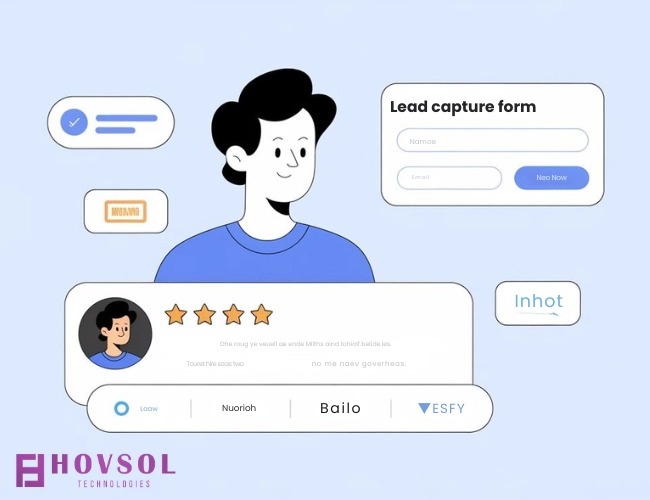
Effectively Leverage Social Proof
People trust people. Basecamp routinely showcases customer testimonials with faces and real names. Try adding:
- Customer logos (with permission)
- Specific results (“Used by 25,000+ businesses”)
- Review scores from real platforms (like G2 or Trustpilot)
Simplify Your Lead Capture Forms
Nobody wants to fill out a long form—just ask HubSpot. They boosted conversions by cutting forms to the essentials: name and email. If you need more, try a multi-step form so users see only one field at a time. Thank them right away, and clearly state next steps.
Step 5: Technical Excellence and Optimization
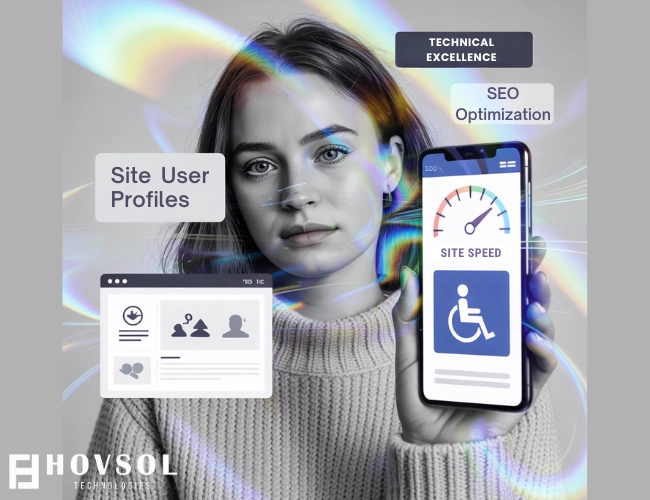
Optimize for Speed and Mobile Devices
In 2024, Google found that 53% of users abandon a site if it takes longer than 3 seconds to load. This emphasizes the importance of mobile performance not just as a user experience factor, but as a conversion killer.
As per Think with Google, over half of mobile users leave a site that takes more than 3 seconds to load—highlighting the need for responsive design and performance tuning across all devices.
o avoid losing potential customers, optimize your images, compress your code, and rigorously test your landing page on various mobile devices. Remember, even a one-second delay—as Amazon famously estimated—could cost you billions in lost revenue annually.
SEO and Accessibility
Even if you run paid ads, don’t skip SEO basics. Add relevant keywords, clear meta descriptions, and SEO-friendly URLs. Make sure your page is accessible: alt-text, keyboard navigation, and high-contrast colors are all musts.
Continuously Track and Improve
A/B testing is your best friend. Test headlines, button colors, and layouts. Booking.com runs thousands of landing page experiments every year, tweaking even tiny details for big gains. Use analytics tools, run small tests, and always optimize.
Treat All Your Marketing Activities as Distinct Campaigns
There’s no such thing as the “perfect” marketing campaign—only campaigns that get better with each iteration. Every landing page, ad, or email you launch is a new chance to learn, adapt, and grow your results.
When you treat each marketing effort as its own focused campaign and break your goals into clear, manageable steps, you’ll uncover exactly what’s working (and what’s not). Over time, this approach doesn’t just improve conversion rates—it gives you the confidence to scale what works and let go of what doesn’t.
The best marketers aren’t chasing perfection—they’re building, testing, and learning with every single campaign.
Keep learning with us and stay ahead—because the digital landscape is always evolving, and together, we’ll help you turn insights into action.
FAQs
1. What is a landing page and why is it important?
A landing page is a dedicated web page designed to capture a visitor’s attention and drive them to take a specific action, like signing up, downloading, or making a purchase. Unlike regular website pages, landing pages remove distractions and focus entirely on one goal, which makes them essential for turning visitors into leads or customers.
2. How can I improve the conversion rate of my landing pages?
To improve your conversion rate, focus on one clear goal, understand your audience’s needs, and remove unnecessary clutter. Use a strong headline, engaging visuals, social proof, and a clear call-to-action. Keep forms short and your page fast-loading. Test changes regularly to see what works best.
3. What’s the most common reason landing pages fail to convert?
The most common reason is a lack of focus—trying to do too much on one page or not making it clear what the visitor should do next. Other big mistakes include weak headlines, unclear CTAs, slow page speed, and ignoring the needs of your audience.
4. How do you determine the main goal for a landing page?
Start by asking yourself what single action you want visitors to take. Whether it’s downloading a guide, registering for a webinar, or making a purchase, make that the sole purpose of your page. Everything on the page should support that goal—nothing else.
5. Why is it essential to know your audience before creating a landing page?
Knowing your audience means you can speak directly to their needs, questions, and pain points. When you show that you “get” them, visitors are far more likely to trust you and take action. Audience insights help you choose the right words, images, and offers.
6. What should a high-converting hero section include?
A high-converting hero section grabs attention instantly. It should have a clear, benefit-driven headline, a supporting sub-headline, and an engaging visual (like an image or video). The call-to-action should be easy to spot, and everything should be above the fold so it’s seen immediately.
7. How do visuals impact landing page conversions?
Visuals help visitors quickly understand your offer and set the mood. High-quality images and videos build trust and keep people interested. Visual cues—like arrows or faces looking toward your CTA—can even guide people where you want them to click, boosting your chances of conversion.
Table of Contents
- Key Takeaways
- Crafting Landing Pages That Convert: Your Essential Guide
- Step 1: Establish Your Foundation
- Step 2: Design for Instant Attention and Trust
- Step 3: Communicate Compellingly
- Step 4: Build Trust and Capture Leads
- Step 5: Technical Excellence and Optimization
- Treat All Your Marketing Activities as Distinct Campaigns




